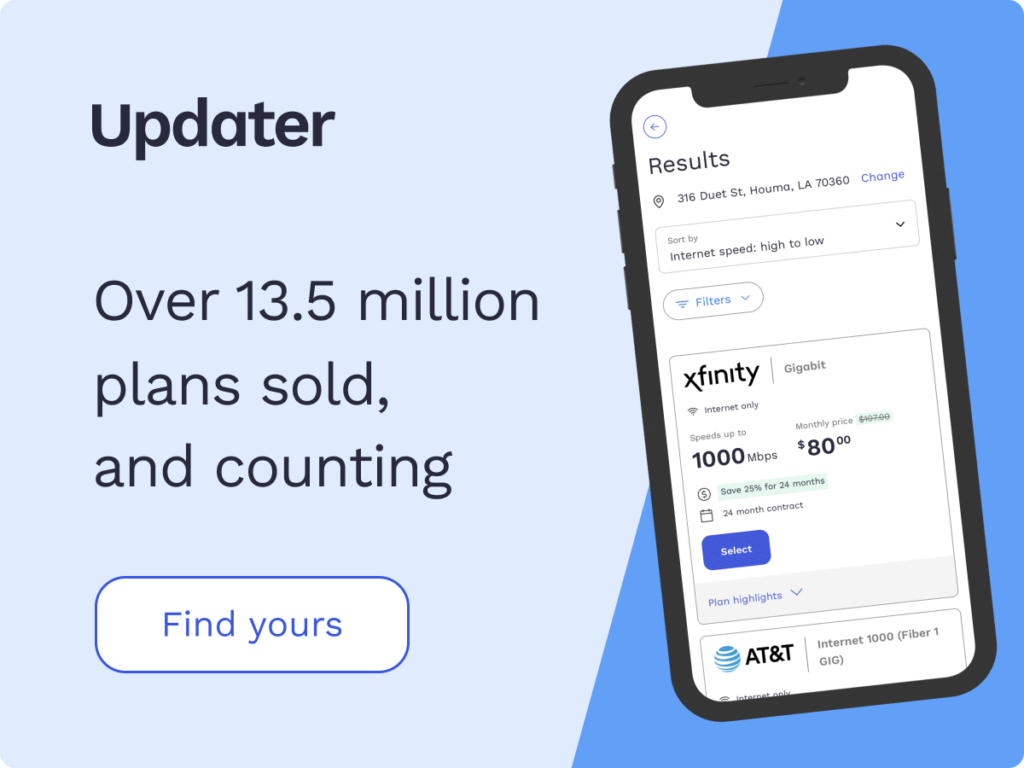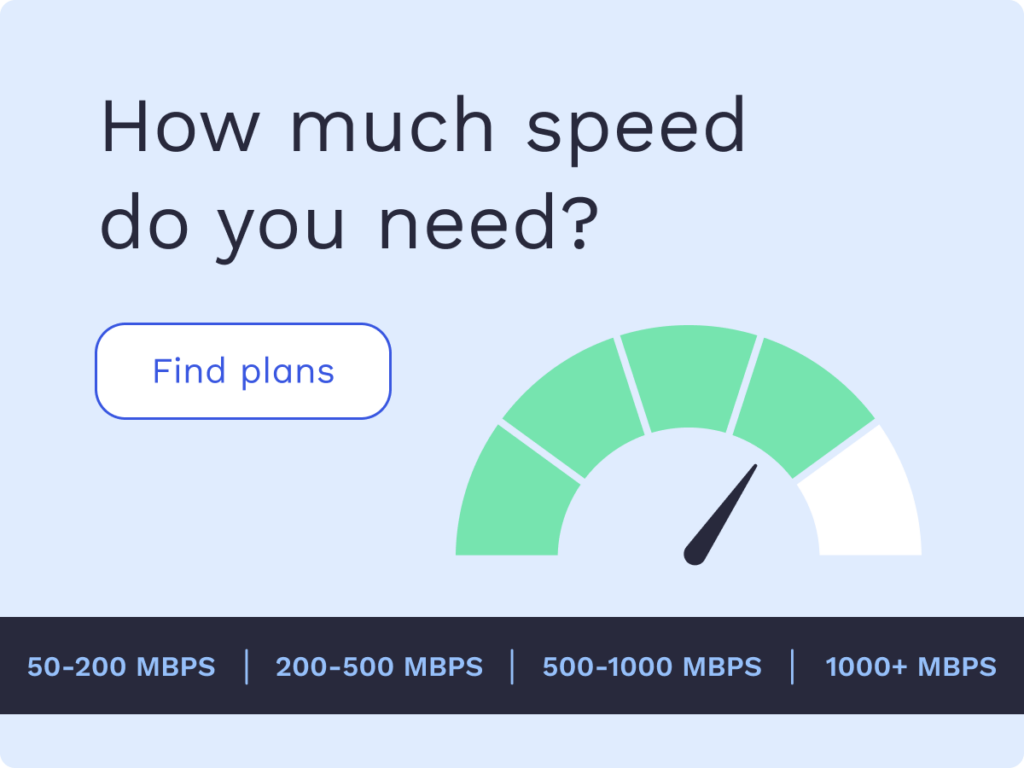4G vs 5G: What’s the Difference?

Want to up your knowledge of 4G and 5G cellular technology? Then you’re in the right place.
When it comes to mobile networks, we’ve all heard of 4G, and now 5G is starting to become more mainstream. But what’s the difference between the two? Is one better than the other? And how do they actually work? This guide is going to help you answer these questions and much more.
Phone manufacturers have already rolled out 5G models in both mid and flagship categories. If you’re holding out on upgrading your device until 5G is widely available, the right time might be now. But first, we’ll explore the two technologies and highlight potential service providers for both.
- What is 4G?
- Who provides 4G service?
- What is 5G?
- Who provides 5G service?
- Comparison of 4G and 5G
- FAQs about 4G and 5G
What is 4G?
4G is the fourth generation of broadband cellular networks used for communication between mobile devices. It was designed to offer high data speeds and low latency (the time it takes for data to be transferred from one device to another). 4G users typically get speeds of up to 100Mbps, while 3G only promised a peak speed of 14Mbps. Ultimately, that means 4G users can enjoy better quality calls and faster internet on mobile devices.
When it was first released in late 2009, 4G was a huge upgrade from the now outdated 2G and 3G technologies, which had much slower connection speeds. During the 3G era, 1GB of data could take about 3 hours and 15 minutes to transfer. On the other hand, it takes around 12 minutes to transfer the same amount of data over a 4G connection.
Who provides 4G service?
What should you look for when considering a 4G service provider? We’ve listed some of the top providers based on speed, capabilities, and data usage. These carriers offer 4G service that covers millions of Americans across the country.
Verizon
According to ZDNet, Verizon takes the top spot for the 4G mobile broadband service with unlimited data plans. Customers can upgrade to a premium service when the traffic influx is high, which makes it suitable for consumers with high data usage/needs.
- Coverage: Verizon offers more than 70% coverage of the 4G LTE network.
- Speed: Verizon 4G LTE is 10 times faster than 3G and can handle download speeds from 5 to 12Mbps.
- Data Cap: Verizon has plans with unlimited data along with a 75GB premium data plan called Above Unlimited for improved speeds during peak hours.
AT&T
AT&T is a budget-friendly option with plans ranging from $35 to $50/month. AT&T is also one of the largest mobile network providers with its own cell towers. Customers can choose from an array of packages including low priced 4G LTE services.
- Coverage: AT&T has extensive coverage when compared with other networks and its service is available across all 50 states.
- Speed: When it comes to AT&T’s speed, it depends on your specific location. However, download speeds for 4G LTE generally go up to 7.1Mbps but faster speeds are available in some areas.
- Data Cap: AT&T has unlimited data, however customers could notice slower speeds between 50 to 100GB of data usage.
T-Mobile
According to ZDNet, T-Mobile is popular for three reasons – affordable prices, high speeds, and swift customer service. Multiple data plans are available for 4G that include plans for single or multiple lines.
- Coverage: T-Mobile offers 62% nationwide coverage, winning the award for third-best coverage in the country amongst the “Big Four” networks.
- Speed: Download speeds start from 9Mbps and go up to 47Mbps, which is perfect for seamless streaming in 4K while you’re on the move.
- Data Cap: T-Mobile offers a maximum of 50GB of data in multiple plans to cover hours of video and music streaming.
Cricket
For 4G LTE, Cricket uses the AT&T LTE network for its data service. This carrier offers flexible, no-contract data plans. Customers can sign up for a month-to-month plan, which makes it useful for those who don’t want a long-term commitment.
- Coverage: Cricket offers nationwide coverage with no annual contract.
- Speed: Cricket has download speeds between 1 and 4Mbps, which means it lies on the cusp of video streaming outside peak use hours.
- Data Cap: Cricket offers unlimited data on its plans.
What is 5G?
5G, or “fifth generation” is a new type of broadband cellular network technology. It has much higher data speeds than 4G—at least ten times faster, maybe more.
5G is the next generation of wireless technology, with blazing fast speeds and lower latency than a 4G network. It will be able to handle up to 10 gigabits per second (Gbps), which means it will be able to transfer 100 times more data than 4G in the same amount of time.
Who provides 5G service?
5G is all about high speeds, reliability, and almost zero latency. Over time, 5G is set to expand the current mobile ecosystem throughout multiple industries such as transportation, remote healthcare, precision agriculture, and digitized logistics to name a few. We’ve rounded up some of the top 5G carriers with an emphasis on speed and coverage.
T-Mobile (Sprint)
T-Mobile or Sprint (now acquired by T-Mobile) have the largest 5G network in the US and they have been able to fully implement Sprint’s 5G spectrum as well. Most 5G smartphones currently on the market have full support for these networks.
- Coverage: T-Mobile and Sprint have one of the largest coverage areas when it comes to 5G. If you live in a major city, your new phone with 5G support will likely connect seamlessly with the network. The 5G network currently serves more than 310 million people and is expected to cover 99% of Americans by 2023.
- Speed: T-Mobile’s average 5G download speed is 2.5x faster than Verizon and more than 3x faster than AT&T.
AT&T
AT&T is another popular option for 5G mobile service. It offers an array of plans to suit varying connectivity needs, and unlimited data plans are major perk.
- Coverage: AT&T has extensive 5G coverage, serving over 250 million people with additional millimeter wave (mmWave) capacity in 42 cities in the US.
- Speed: AT&T has an average 5G download speed of 51.5Mbps.
Verizon
Verizon is also among the big players for 5G connectivity. Initially, Verizon started rolling out 5G in limited cities with ultra-Wideband (UWB). Now it’s a part of an extensive nationwide network with Dynamic Spectrum Sharing (DSS).
- Coverage: To improve its market and customer share, Verizon launched C-band in January 2022 to increase its active users to 90 million.
- Speed: Verizon customers can enjoy 5G speeds of up to 56.0Mbps on average.
Comparison of 4G and 5G
4G and 5G differ in terms of latency, speed, network slicing, security and equipment. As 5G is a relatively new technology, it’s not as widespread as 4G.
Latency
The difference between 4G and 5G isn’t limited to speed alone; it also has implications for latency, or how quickly a packet of data can move from one place to another. 5G has an average latency of 1 millisecond (ms), which allows for things like real-time voice and video calls with very limited lag.
Speed
With average speeds of up to 100Mbps, 5G makes it easier to watch high-definition movies or play demanding games in the highest graphics settings. In some cities, the difference between 4G LTE and 5G isn’t significant but since 5G is still in deployment stages, customers can expect lightning-fast speeds in the near future.
Coverage
As of 2022, 5G coverage across the US is mostly limited to major cities. While 4G LTE is still prevalent in smaller towns and highways. 5G connectivity is generally non-existent in rural areas but 4G coverage is extensive across the country.
Equipment
5G networks need a different infrastructure than 4G. In most cities, telecom companies rely on 4G LTE towers to support 5G plans, however, they are working to install new dedicated 5G towers. It requires extensive planning and resources to implement and the standalone 5G equipment will be based on three concepts:
- Millimetre waves: These are extremely high-frequency radio waves that provide speeds in gigabits over mobile devices.
- Beamforming: Is a high-precision antenna ray capable of directing wireless signals to individual devices.
- Massive MIMO (Multiple Input Multiple Output) technology: Is a bulked-up 5G transmitter designed to deliver wireless data at a higher capacity.
Although 5G carriers plan to deploy their own equipment and build completely independent networks, they will still rely on 4G infrastructure until their 5G networks can cover enough geographic territory. So, despite new towers and equipment, there will still be a transition period before 5G can be completely independent from its predecessor.
FAQs about 4G and 5G
Will 5G work on a 4G phone?
Unfortunately, due to the differences in frequencies and the chipset needed to process data, 5G will not work on a 4G LTE phone. To access a 5G network, your phone needs to fall into the 5G spectrum that includes C-band, millimeter wave radio bands, and sub-6Hz frequency.
What 5G phones are currently available on the market?
All major mobile phones have launched 5G variants in both mid-range and flagship models. Samsung, OnePlus, Sony, and Apple all have 5G models. Qualcomm has also launched a dedicated chipset for 5G connectivity.
Is 4G becoming obsolete?
Yes. Unfortunately, like any technology 4G will one day be obsolete. 5G is still in its implementation stages and, in some parts of the country, projects have been halted due to restrictions. But eventually, 4G will be an outdated technology.
Is 5G a better alternative to 4G?
Yes, 5G is a newer and superior technology that offers reduced latency and up to 10 times faster speeds as compared to 4G LTE. On a 5G network, users will expect little to no interruptions while downloading or streaming. While the speed is highly dependent on the network you’re on and the city you’re in, 5G will undoubtably offer much faster speeds than 4G.
Which carrier is the largest in terms of coverage for both 4G and 5G?
T-Mobile has the biggest market share when it comes to maximum coverage for both 4G and 5G.
Who are the main providers for 5G service?
T-Mobile, AT&T and Verizon currently have 5G data plans rolled out in major cities in the US. However, smaller companies are also aiming for a slice of the 5G market share.
US Cellular offers 5G services albeit in a smaller area than the other companies. Most of its services are in Wisconsin and Iowa and it offers low-band services on its 600MHz spectrum in some other states and cities.
DISH Network is another service provider that has plans to roll out its own 5G services soon.
What is 5G NR?
5G NR is a radio interface that allows users to connect to a 5G network. NR here signifies New Radio and it’s based on a spectrum of frequencies that 5G relies on to offer internet connection over a phone. Experts have compared NR with Wi-Fi and Bluetooth, but the term itself is a bit outdated.
Is 5G available for home internet?
Yes, while 5G is mainly hailed for its capabilities as mobile technology, both T-Mobile Home Internet and Verizon 5G Home Internet have been getting attention. They provide fiber and cable internet alternatives with attractive speeds up to 1000Mbps.
T-Mobile Home Internet is one of the most popular and widely used wireless internet providers for homes. Verizon’s 5G Home Internet has a faster speed but limited availability. The two services could be good competitors to cable companies in the future and if you’re ready to end your cable internet contract and switch to 5G, these two could be good options.
*Pricing varies by location and availability. Speeds may vary. All prices subject to change; for current pricing and availability visit our internet service page. Prices as of 3/16/22.
Disclosure | Updater articles are based on our own data and research, independent from partner relationships. We are not compensated by partners for information and opinions presented here. Our Editorial Terms of Service can be found here.














